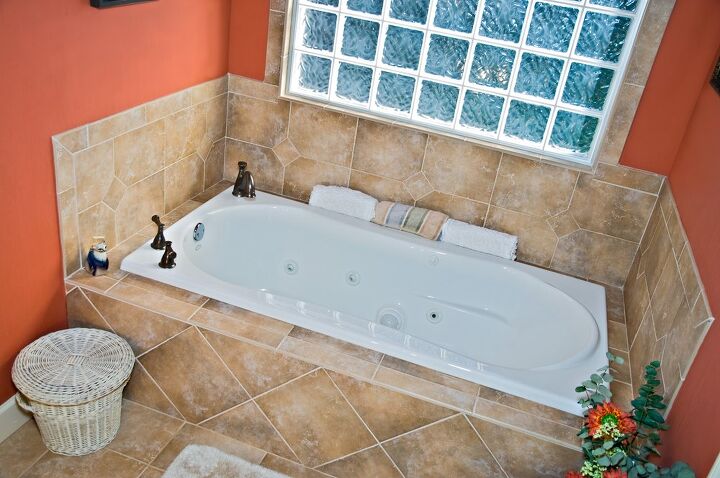Filled Vs. Unfilled Travertine: What Are The Major Differences?

Travertine tiles have emerged as a good option to use for individuals looking to elevate their home decor. Many homeowners absolutely adore the marble-like appearance of travertine. They also appreciate the fact that it is often cheaper than other tile options.
Before you start buying up travertine tiles for your home though, you should take the time to know more about them. Doing so will allow you to make the best purchase for your household. For instance, knowing the difference between filled and unfilled travertine tiles will be very helpful.
If the travertine tiles are filled, that means its holes have been filled with some kind of substance. Unfilled travertine tiles do not undergo that treatment. Filled travertine tiles present a smooth and uniform finish while their unfilled counterparts are more rustic and textured.
Should you be using filled travertine tiles or are the unfilled options better for your intended applications? Discover the answer to that important home décor question by continuing with this article.
Do You Need to Hire Tile Installers?
Get free, zero-commitment quotes from pro contractors near you.

Differentiating between Filled and Unfilled Travertine Tiles
While shopping for travertine tiles, you will be asked if you want them filled or unfilled. Going with the filled variety means that the holes in the travertine will be occupied by a filler of some kind. Obviously, that filler is kept away from unfilled tiles and their holes are left open.
That’s the first point of difference between them. There are others you need to know about and we’ve highlighted them below.
Appearance
Filled and unfilled travertine tiles do not look exactly the same. That’s due to the presence of the filler material.
The filler helps even out the appearance of the travertine. The end result is a tile that has a more uniform appearance. Unfilled tiles look more rustic. They bear a closer resemblance to limestone that you may find outdoors.
The filled travertine tiles are a bit easier to integrate into home décor because of how they look. If you want more visually striking design elements though, the unfilled travertine tiles may be more to your liking.
Texture
Homeowners should also note that filled and unfilled travertine tiles differ from one another in terms of texture. The difference in texture is important. The kind of texture you’re getting can help determine where the tiles should be used.
Starting with the unfilled tiles this time, they are the ones that feature a rough texture. It’s easier to walk on those unfilled tiles because your feet can grip them better.
The filled tiles feel smooth. They don’t offer as much grip as the unfilled variants.
Ideal Placement
We hinted at this above, but the texture of your chosen travertine tiles can affect how they are ideally used. You should account for that before you make a final decision on your purchase.
Generally speaking, the unfilled travertine tiles are more versatile. You can use them indoors and outdoors with no issue.
Unfilled travertine tiles can also be installed even in environments that are often soaked with moisture. They will work just fine in your bathroom because of how textured they are. Slipping is not as big of a threat because your feet can hold steady on the tiles more consistently.
You have to be a bit more selective when choosing spots for the filled travertine tiles. Because of how smooth they are, you do not want them in the bathroom. They can be the cause of an accident in there and you want to steer clear of that.
Try to reserve the filled tiles for spots where they can be more decorative. Consider installing them along your backsplash or maybe on top of your countertops.
Types of Travertine Tile Finishes
Aside from choosing between filled and unfilled travertine tiles, you will also have to select a type of finish. Much like the previous choice you made, the finish can also impact the appearance and texture of your travertine tiles.
Tumbled Finish
Tumbled travertine tiles feature a rugged appearance and texture. A lot of people like that combination. They appreciate the fact that the tiles look like they were carved out of stone.
Go with unfilled travertine tiles that featured a tumbled finish if you’re going for the natural look. Those tiles will look fantastic inside your garden or other outdoor spots.
Brushed Finish
Next up, we have the brushed travertine tiles. You’ll notice that the brushed tiles look a bit smoother compared to the tumbled tiles. They feature something that can best be described as a matte finish.
Texture-wise, brushed travertine tiles still retain some roughness. They aren’t as rugged as the tumbled tiles, but they still provide a bit of grip.
Honed Finish
Now we’re getting into the travertine tiles that are on the smoother side. Tiles with a honed finish are flat. The imperfections and inconsistencies that characterize tumbled and brushed tiles are gone now.
Honed tiles do have some luster, but not a lot of it. They are about the same as brushed tiles in that regard.
Polished Finish
You can tell right away if the tiles feature a polished finish. They are very smooth and shiny. Polished tiles work best for decorative purposes. Place them in parts of your home that are almost always on full display.
Should You Seal Travertine Tiles?
We’ve talked at length about the differences between filled and unfilled travertine tiles. We also got into the different finishes and the impact they have on the look and feel of the tiles.
This time around, let’s talk about the matter of sealing. Do you need to seal your travertine tiles or is that an unnecessary step?
Sealing is not just recommended for travertine tiles. It’s practically a must. Because travertine is very porous, it can absorb a lot of liquid very quickly. That’s not a good thing. Too much water inside the travertine can change its appearance.
Water is actually the least of your concerns. If other liquids like soap or shampoo get into the tiles, they can stain the travertine. They can ruin the travertine’s gorgeous natural look. You must take the time to seal your travertine tiles no matter which kind you decided to buy. Skip the seal and your travertine tiles may not last that long inside your home.
Do You Need to Hire Tile Installers?
Get free, zero-commitment quotes from pro contractors near you.

Related Questions
How Do You Maintain Travertine Tiles?
Floors or countertops that are made from travertine tiles are pretty easy to clean. For daily maintenance, you can just sweep or mop them clean.Vacuum cleaners also work well on travertine tiles. They are especially good for cleaning up the rougher tiles with the brushed and tumbled finishes. You can use the vacuum cleaner to get into the nooks and crannies of the tiles.You should also clean the tiles regularly. Go over them at least once a week to maintain their beautiful appearance.When dealing with stains on your travertine tiles, the best course of action is to clean them up quickly. Be careful when choosing cleaning agents though. Don’t use anything acidic because they can damage the tiles.Mira Soap is a good choice for cleaning travertine. Other neutral cleaning agents can also work well on travertine’s surface.
What Are the Filler Substances Used for Travertine?
The filler materials often used for travertine are cement mixtures, grout, and polyester. Manufacturers also take care to pick fillers that match the travertine’s color. That way, the fillers won’t be noticeable.

Gary Evans is passionate about home improvement. He loves finding out how to make improvements in the easiest, most practical, and most affordable ways. Upgrading his home kitchen is one of his ongoing hobbies. Gary is also a long-time content creator and enjoys spending his free time tending to his hydroponic vegetable garden.
More by Gary Evans



























